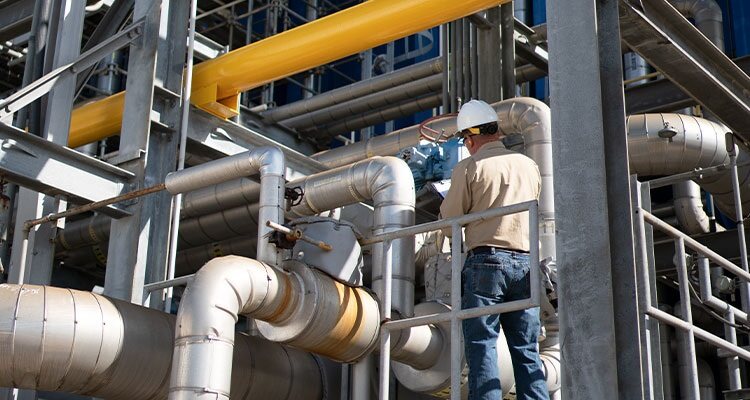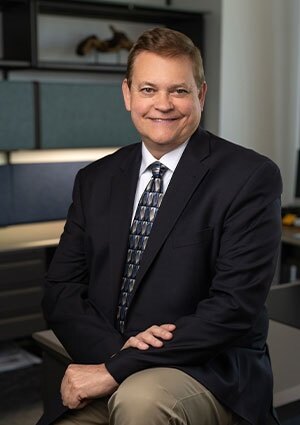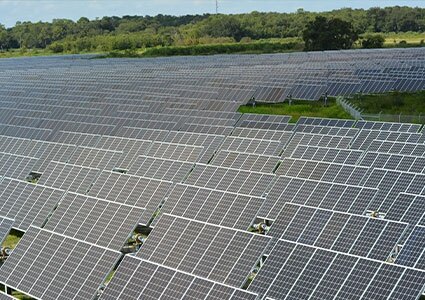
How Lakeland Electric is balancing affordability and reliability while also embracing sustainability
Lakeland Electric (Lakeland) is the third largest municipally owned public power utility in the State of Florida. Having relied on coal power plants for decades, the business has undergone significant transformation, adapting to the demands of modern consumers by integrating renewable energy sources. With a focus on affordability and reliability, Lakeland is on a mission to improve access to renewable energy, but Florida’s weather often has other ideas.

The business began in 1889, but it wasn’t until 1904 that it was purchased by the City of Lakeland, becoming one of the first publicly owned electric companies in Florida. Today, it remains the state’s third-largest public utility and is part of the Florida Municipal Power Pool. It operates as part of the state’s larger grid, interconnected with other utilities to ensure voltage quality, and maintain power flow in Lakeland and the surrounding areas.
Michael (Mike) Beckham, General Manager at Lakeland, joins us alongside the company’s Utilities Marketing Manager, Cathryn Lacy, to discuss the history of the business, its latest developments, and the ongoing global transition to renewable energy.
Lakeland is vertically integrated, undertaking its own generation, distribution, and transmission, as well as reading and billing for its customers. “We don’t have any external shareholders, so our true focus is always on our customers here in the Lakeland area,” Cathryn begins. “We prioritize affordable rates, dependable service, and sustainability, from both an environmental and business standpoint.”
Mike agrees: “It’s a constant balancing act between affordability and reliability. We aim to be in the lowest quartile of utility companies in the state in terms of price, while being in the highest quartile for reliability.”
Aside from maintaining both reliability and affordability, one of the biggest challenges Lakeland must navigate is Florida’s temperamental weather. While the state has historically fallen victim to some of the largest hurricanes in the US, its unique topography makes it a favored environment for thunderstorms.
“Florida has the most lightning density in the US and Four Corners, Florida (20 miles away from our service area) is considered the lightning capital of the US,” Mike tells us. “So, we’re constantly trying to predict the weather, as it can impact the way we manage the load throughout the state. We have strong, robust devices that can rapidly restore power in the event of a lightning strike, as long as equipment is not seriously damaged. Being connected to the larger grid means that, in many cases, we can switch, maintain, or restore power before the consumer realizes the power supply was interrupted.
“On the other hand, we have hurricanes. These events are entirely different because we simply cannot work during the storm. Instead, we have to wait until the hurricane passes before we can start restoring power. In these circumstances, we share resources with other utilities across the state, and if it’s a particularly large hurricane, companies from outside the state even offer their help.
“Unfortunately, we’re quite experienced in recovering from hurricanes, so we can quickly spring into action with our emergency operations plan and restore power relatively quickly,” Mike explains. “We’re constantly evaluating the ways in which we can be better prepared to withstand the hurricane, as opposed to having to recover.”
Cathryn adds: “Since Hurricane Irma in 2017, we’ve focused on hardening our grid. We’ve replaced several wooden poles with steel ones, for instance, and added features on our lines to automatically prevent outages.”
Such investments have enabled Lakeland to significantly reduce the time it takes to restore power. “Sixty percent of our customers lost power due to Hurricane Irma,” Mike reveals. “We restored some of the major damage and got a substantial number of those reconnected within the first 24 hours, but it took us a total of 12 days to restore power completely.
“However, if we compare that to the hurricane we experienced last year, where we had a similar volume of outage, we managed to restore power in just six days. This shows that the investments we’ve made over the last five years or so have halved the time it takes for us to restore power to all those who lost it.
“We’ve also investigated the advantages of underground versus overhead power lines, but it can be more or less challenging depending on how populated an area is, as well as its geographical nature,” he continues. “While we are installing these lines where possible, we’re strategic about the locations, as not all areas are a successful fit for underground cables, like areas prone to flooding, for example.”
First for us
Returning to the topic of renewable energy, Cathryn explains: “We closed our last coal plant in 2021 and we’ve already reduced our carbon emissions by 50 percent. We’ve also recently purchased six reciprocating internal combustion engines (RICE), which fire up much quicker than traditional gas turbines and can take on load in a matter of minutes.
“We’re quite excited about the generators, as it’s the first installation of MAN Energy Solutions’ engines for electric generation in the US,” she adds. “They’re 20 megawatts each and we can move them around to match demand, which is crucial as we increasingly rely on renewable energy, specifically solar.”
Having graduated in 1981, Mike has a unique perspective on the industry’s shift towards renewable energy, as he has directly witnessed the changes throughout his career. “I started out designing and constructing many of the coal plants, as well as nuclear plants, that I then decommissioned later in my career,” he reflects. “In fact, all the plants I previously worked on are now decommissioned.
“I’ve worked in nearly every piece of the jigsaw puzzle that makes up the industry: public utilities, an independent power producer, and a federal power company. Coming to Lakeland in 2015 was a fantastic opportunity to join a company that still maintained a very active generation – and it’s not too bad seeing my career out in the sunny State of Florida,” Mike laughs.
“Although coal did a lot of great things for our country, it’s time to move on to more sustainable sources,” he proposes. “It also helps that as companies across the globe are trying to significantly lower their carbon emissions, the US is introducing additional incentives and federal grants to support the adoption of renewable energy.”
Cathryn adds: “We’ve also just signed a letter of intent with Emera Technologies (Emera) for their BlockEnergy proposition. The concept of micro grids is entirely new to the industry and proprietary technology for them, which we hope to move to fruition within the near future.
“It means the utility company will own the solar panels within a community, with the generated power shared between the neighborhoods. Each area will have batteries and backup generators to provide a closed system with near 100 percent reliability.
“One of Emera’s existing micro-grid communities, which comprises 37 residential properties, was able to ride out the last hurricane without any loss of power,” she goes on. “Its design connects the community underground and allows it to be autonomously powered with reliable, renewable electricity.”
Adaptable and sustainable
As our conversation draws to a close, Mike shares his vision for Lakeland’s future. “I want us to remain flexible yet stable, so that we can successfully adapt to market trends and sustainable developments as they arise. With sustainability dominating energy discussions, our workforce is energized and enthusiastic to help shape the world’s energy transition.
“Our internal focus will be smart devices, BlockEnergy and smart grids, and continuing to match our capacity to demand,” he shares. “Personally, I think sustainability also refers to ensuring everybody can afford to access our power grid and be able to utilize clean, renewable power where possible.
“Above all,” Mike concludes, “we want to position ourselves to be at the forefront of renewable energy developments, while maintaining affordable prices for our customers.”